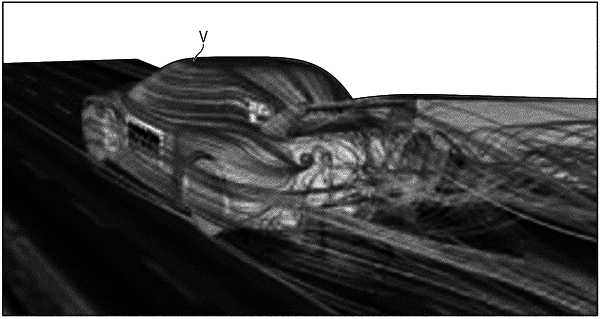| CPC G01C 21/3469 (2013.01) [B60W 30/16 (2013.01); B60W 40/105 (2013.01); G01S 17/89 (2013.01); G06N 20/00 (2019.01); G06V 20/584 (2022.01); B60W 2554/802 (2020.02); B60W 2556/10 (2020.02); G06V 2201/08 (2022.01)] | 18 Claims |

|
1. A method for energy efficient mobility, the method comprising:
receiving an input from a driver corresponding to aggressive switching or minimal switching for a given trip;
identifying a first vehicle moving on a road;
calculating a first energy required to complete a trip;
determining a size of an air pocket zone of the first vehicle;
calculating a second energy required to transition to the air pocket zone of the first vehicle and to complete the trip in the air pocket zone of the first vehicle;
either transitioning to the air pocket zone of the first vehicle based on both the second energy being more energy efficient than the first energy and the input corresponding to the aggressive switching, or declining to transition to the air pocket zone of the first vehicle because the input corresponds to the minimal switching, even though the second energy is more energy efficient than the first energy;
responsive to transitioning to the air pocket zone of the first vehicle, determining an optimal distance behind the first vehicle having optimal energy efficiency, wherein the optimal distance is based at least on each of whether the first vehicle has an anti-lock braking system, an intelligent cruise control system, and an autonomous braking system;
identifying a second vehicle moving on the road, wherein identifying the second vehicle comprises receiving second vehicle information and second historical driver information from an online database, wherein the second vehicle information comprises a time since a last brake change of the second vehicle occurred, and wherein the second historical driver information comprises a driving history and a number of speeding tickets of a driver of the second vehicle;
determining a size of an air pocket zone of the second vehicle;
calculating a third energy required to transition to the air pocket zone of the second vehicle and to complete the trip in the air pocket zone of the second vehicle; and
declining to transition to the air pocket zone of the second vehicle based on the second vehicle information and/or the second historical driver information, even though the third energy is more energy efficient than the second energy.
|